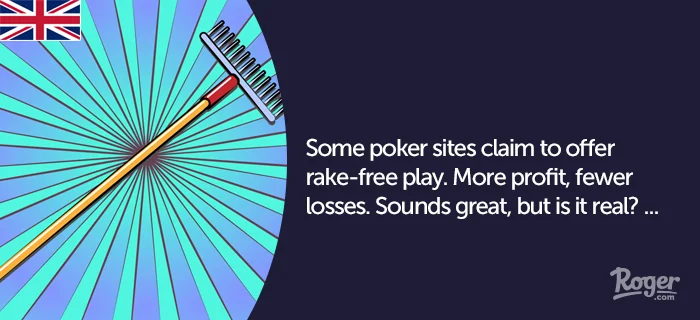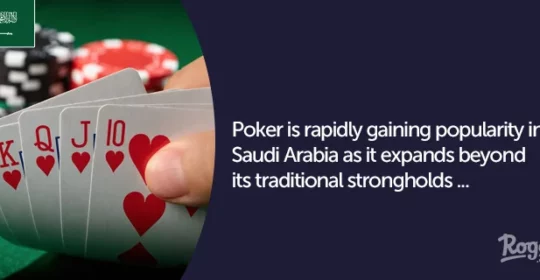Most players overlook the rake.
They track their bankroll, win rate, and bonuses but ignore how much the room quietly takes from every hand—for nothing. Over time, a 3-5% rake can erase any edge.
Some poker sites claim to offer rake-free play. More profit, fewer losses. Sounds great, but is it real? Can you truly play without rake and out-earn traditional rooms? Or do hidden fees, withdrawal limits, and low traffic ruin the deal?
In this blog, we’ll explore whether poker sites without rake really exist and what that means for your play.
Table of contents
- Understanding rake – the primary revenue model of poker sites
- How rake affects your long-term profitability
- Rake structures across different poker sites
- Rakeback programs – the best way to offset rake?
- Are there any poker sites without rake?
- Membership-based poker sites – paying a flat fee
- Cryptocurrency poker sites – no rake, but at what cost?
- Private poker clubs – a real alternative or a risky move?
- The downsides of playing on no-rake poker sites
- FAQs about no-rake poker sites
- Conclusion: should you play on no-rake poker sites?
Understanding rake – the primary revenue model of poker sites
Poker rooms make money through rake—a commission from every pot and tournament. It’s the price of using their software, ensuring security, and keeping games running. Without it, they wouldn’t survive.
In cash games, a 3-5% rake is taken from each winning pot, sometimes reaching 10% at lower stakes. In tournaments, it’s built into the buy-in as $100 + $10 means $10 goes to the room.
Rake isn’t just a minor fee; it directly impacts profitability. The more hands you play, the more you pay.
How rake affects your long-term profitability
Rake seems insignificant at first. They took a couple of dollars from the bank. What's the big deal? But over the distance, the amount becomes huge.
Let's say a player plays 10,000 hands at the NL50 limit in a month. The average rake is 5%. This means that he loses $500 just on commissions. The player could earn much more without the rake if the win rate is three bb/100.
Rake is a hidden “tax” on winnings for pros and a fast track to bankroll ruin for amateurs. Ignoring it leads to miscalculations in bankroll management and poker strategy.
Rake structures across different poker sites
Poker room fees vary. They depend on many factors: the popularity of the platform, player traffic, discipline and game format.
Let’s look at the most popular poker sites:
| Poker room | Rake in cash games | Rake in tournaments | Return of the rail |
|---|---|---|---|
| PokerStars | 5% | 10% | Minimal |
| GGPoker | 4.5% | 8-10% | Up to 60% |
| Americas Cardroom | 4% | 6-9% | Up to 50% |
| Winamax | 3-4% | 5-7% | Up to 40% |
| PartyPoker | 5% | 8-10% | 25-40% |
Where is more profitable? PokerStars is the largest high-traffic room, but the commission is one of the toughest. GGPoker offers a rakeback system that offsets costs. And Winamax suits players looking for low rake at micro-limits.
Rakeback programs – the best way to offset rake?
Poker rooms know rake can drive players away, so they offer rakeback—a way to refund part of the fees.
How does it work? The more you play, the more money is returned to your account. Bonus conditions vary from poker room to poker room. For example, VIP players can receive up to 60% rakeback at GGPoker, whilst at PartyPoker, it is between 25% and 40%.
In some rooms there is a membership model where players pay a subscription instead of rake. This is a rare system, but it is very profitable at low limits.
Is it worth chasing rakeback? If you play regularly, yes.
👉 The higher the rakeback percentage, the less commission you lose. But if a room with a good rakeback offers low traffic and expensive cashouts, its profitability is questionable.
Are there any poker sites without rake?
Commission-free poker rooms sound too good to be true. Many dream of rake-free play, but do such sites really exist?
Remember, no room operates for free—they're built to make money. If there’s no standard rake, there’s another way they profit.
Membership-based poker sites – paying a flat fee
Some poker rooms use a membership model, replacing the rake with a subscription.
Players pay a monthly fee instead of paying a commission on each hand. This benefits those who play a lot, as the rake does not accumulate from each session.
But this model has some disadvantages. It is important to consider game selection—how many disciplines and whether they suit your style. If the room has a weak pool of opponents, saving on the rake will not be beneficial.
Cryptocurrency poker sites – no rake, but at what cost?
Some cryptocurrency sites claim that they do not take rake.
This is partly true. Instead of taking rake, they profit from other services like crypto conversion and hidden withdrawal fees.
Playing in such rooms involves risks:
- Lack of licenses and fair play guarantees;
- Difficulties with payment processing;
- Low liquidity (few active tables).
If a poker room offers rake-free play, check the fine print. Players often pay but just in less obvious ways.
Private poker clubs – a real alternative or a risky move?
Another option is private clubs, where the rake is either minimal or nonexistent. These are closed communities with a game of trust. You can join them only by invitation of the organisers or participants.
Private clubs have a lot of perks:
- Lack of a traditional rail
- A small percentage of experienced players
- Stakes and game formats can be negotiated
Don't overlook the risks. There’s no guarantee the site will pay out winnings or that it’s free of bots and unfair software.
The downsides of playing on no-rake poker sites
If a poker room doesn't take a commission, how does it make money?
🚨 The answer is not always obvious. Such sites may compensate for the lack of rake with hidden fees, unfair play and cashout problems.
The main risks are reliability, player traffic, and fund withdrawal. If a reputable regulator does not control the site, no one can guarantee trouble-free withdrawal of winnings.
Are no-rake poker sites safe?
Trackless rooms often operate without a license, but that doesn’t automatically make them scams.
However, there are red flags that can signal an unreliable site:
- No license — If a poker room is not regulated anywhere, it can disappear along with the players' money.
- Closed System — Invitation-only private rooms sound interesting, but it's an optimal environment for collusion and unfair play.
- Unclear payment terms — If there are no clear withdrawal deadlines in the rules, this is a red flag.
Is it trustworthy? If a site can't prove its legitimacy, it's safer to look for another option. Don’t put yourself at risk.
Player traffic and game availability
Even if the room is honest, a trackless model can crush player traffic.
Why does this matter? With fewer players, draws become rare, and some tables never fill. Without consistent traffic, game selection suffers (usually limited to Hold'em and Omaha) forcing you to adapt.
Withdrawal and payment processing issues
The biggest problem with no-rake rooms is the reliability of payouts. If the site does not receive a stable income, it can:
- Initiate delays — Money can “hang” for weeks without explanation.
- Forced play — Some poker rooms do not allow withdrawals until a player has played a certain amount of money.
- Create hidden commissions — For example, when processing payments through third-party services.
Playing in crypto-based poker rooms is risky. They often face payment processing issues, as banks and payment systems may block transactions.
FAQs about no-rake poker sites
Got a few more questions? We’ll answer the most common no-rake poker FAQs below.
Do any legit poker sites offer zero rake?
Most traditional sites charge rake, but some membership-based or crypto platforms claim to be rake-free. However, they often come with hidden fees instead.
Are membership-based poker sites better than traditional ones?
They can be great for high-volume players, but liquidity and game selection may be limited.
Can I trust cryptocurrency poker sites with no rake?
Some are legitimate, but many lack regulation and pose security risks. Always research thoroughly before depositing.
What's the best way to minimise rake on regular poker sites?
Seek out sites with high rakeback, VIP programs, and promotions that help offset rake costs.
Is playing in private poker clubs a good alternative to online sites?
It can be, but it depends on trustworthiness, game fairness, and the reliability of payouts.
Conclusion: should you play on no-rake poker sites?
Poker without rake sounds tempting, but it’s not that simple. If there’s no commission, the room earns through subscriptions, hidden fees, or withdrawal limits. In the worst case, it vanishes with your bankroll.
Which is better: a trackless room or a site with solid rakeback? The answer’s clear. Most serious players prefer stable rooms with transparent terms. A strong rakeback program + high traffic = more long-term success.
Trackless rooms are worth experimenting with, but for reliability, liquidity, and guaranteed payouts, stick to proven sites.
See the best poker sites online now.
Or keep learning about the online gaming world via the Roger blog.





